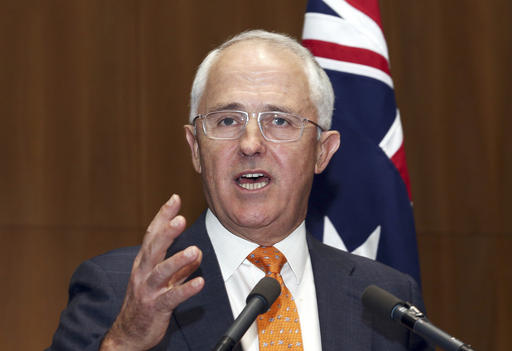What you need to know about Australia’s election

Prime Minister Malcolm Turnbull holds his hand up as he speaks to the media during a press conference at Parliament House in Canberra, Australia, Sunday, May 8, 2016. AP
CANBERRA — Australia will go to the polls on July 2 after Prime Minister Malcolm Turnbull on Sunday called a “double dissolution” election. Here are four key facts about the polls:
Why has it been called?
An election must be held every three years and one had to be called sometime this year. The government is going early because in the current parliament crossbenchers — politicians who are independent or from minor parties — hold the balance of power in the upper house Senate, and they have failed to pass legislation relating to the creation of a construction industry watchdog.
The government wants to bring back the Australian Building and Construction Commission, scrapped by the former Labor government and loathed by union leaders, and is prepared to stake its political future to achieve its goal.
What is a ‘double dissolution’ election?
A double dissolution election is significant because it is the only occasion on which all senators face election at the same time. It is called to end a deadlock between the lower and upper houses of parliament — the House of Representatives and the Senate.
Australian governments generally control numbers in the lower house, but due to Australia’s proportional voting system they often do not have the same sway in the Senate. If legislation passed by the lower house becomes stalled, or is rejected, twice in the Senate, resolving the conflict can be achieved by a double dissolution of parliament, where all seats in both houses are then contested.
This election is only the seventh time a double dissolution has been called and has been criticised as opportunistic by the government looking to boost its numbers in the upper house.
Who is running for prime minister?
Prime Minister Malcolm Turnbull, a polished millionaire former banker whose socially liberal views include support for gay marriage, is up against Labor’s Bill Shorten, an ambitious and articulate former union chief whose mantra is fighting for middle and working class families.
Turnbull wrested power from Liberal Party colleague Tony Abbott last September and has consistently been ahead of Shorten in opinion polls, although the gap has narrowed in recent months.
What are the key policy battlegrounds?
The government is centring its campaign around economic management, arguing it has the fiscal know-how to ensure the country transitions from an unprecedented mining investment boom to one that is more diverse and creates new jobs. It is also dangling tax cuts for workers and small businesses, while highlighting its immigration policies that have stopped asylum-seeker boats.
Labor’s pitch is focused on looking after lower-and-middle income families, improving schools and healthcare, pushing for more renewable energy and a fairer tax system.
RELATED STORIES
Australia’s new deputy prime minister elected unopposed
Duterte dares US, Australia to cut ties














